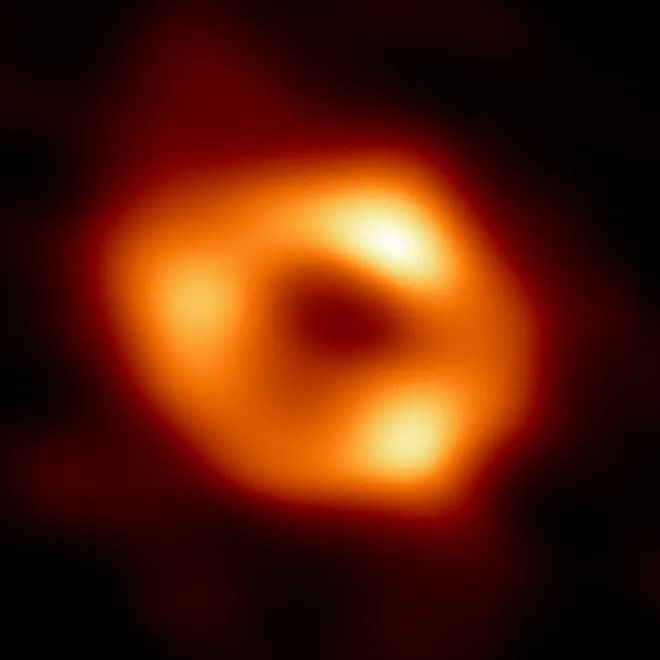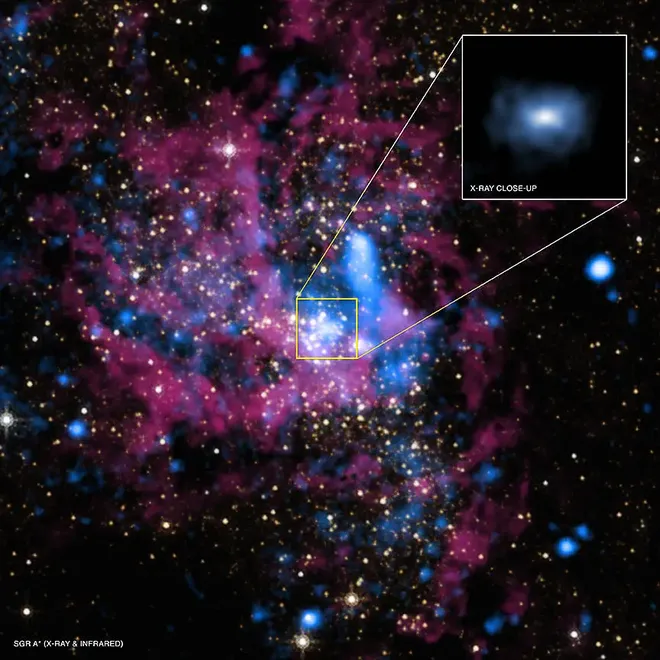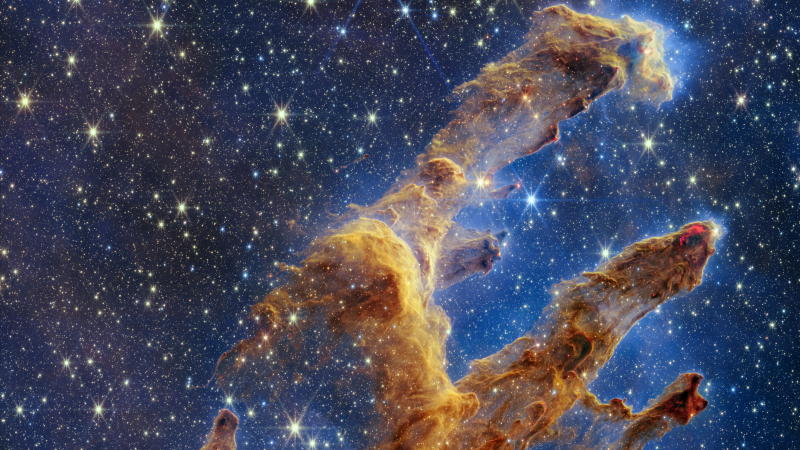Study finds our galaxy’s black hole is altering space-time. Here’s what that means.
Researchers have found that the supermassive black hole in the center of our Milky Way galaxy, known as Sagittarius A*, is spinning so rapidly that it is altering the fabric of space-time around it.
Using the Chandra X-Ray Observatory, the team of physicists were able to observe the black hole, located about 27,000 light-years away, and make calculations about Sagittarius A*’s rotational speed. Their findings, published in October in the Monthly Notices of the Royal Astronomical Society, confirmed that the black hole's spin is causing what is known as the Lense-Thirring precession, a frame-dragging effect involving planets and time.
"If you have a rapidly rotating black hole, the space-time around it is not symmetric – the spinning black hole is dragging all of the space-time around with it," lead study author Ruth Daly, a physics professor at Penn State University, told CNN. "It squishes down the space-time, and it sort of looks like a football.”
Dinosaur extinction:New study suggests they were killed off by more than an asteroid
What is space-time?

In simple terms, the fabric of space-time is a physics concept that recognizes the connection between space and time.
Astrophysicists recognize that time is not independent of space, and that both combine to explain both the motion of massive objects in the universe, as well as the relativistic effects of traveling near the speed of light.
Albert Einstein laid the groundwork for the development of the idea of space-time as part of his theory of relativity when he proposed that for the speed of light to be constant, both space and time are relative, depending on an observer's speed. But the concept of space-time itself was first proposed by the mathematician Hermann Minkowski in 1908.
Physicists say to think of how we see space, then, as a four-dimensional continuum in which the three dimensions of space fuse with the single dimension of time. The result is the formation of the fabric that curves in response to massive celestial bodies – like spinning black holes.
Findings will help astronomers understand black hole's history

Astronomers believe that our galaxy isn't unlike nearly all others with black holes located at their center, where their intense pull of gravity prevents all matter and even light from escaping.
But what makes Sagittarius A* stand out is its rotational speed, which the researchers calculated using what is known as the outflow method. By studying radio waves and X-ray emissions in the material and gases surrounding black holes – known as the accretion disk – the team was able to deduce that the black hole's spin rate was similar to that of the much more massive Messier 87 (M87*,) a black hole in the Virgo galaxy cluster.
What makes that notable is that because M87* is so much larger, Sagittarius A* has less distance to travel when it completes a rotation.
While altering space-time poses no threats to humanity, Daly told CNN that the findings will help other astronomers and physicists understand the black hole's history.
“It’s a wonderful tool to understand the role that black holes play in galaxy formation and evolution,” Daly told CNN.
'Unraveling new worlds:'European astronomers find clouds made of sand on distant exoplanet
Sagittarius A* and other black holes
Black holes have been something of an enigma ever since the first one was identified in 1964 in the constellation Cygnus.
It wasn't even until four years ago that humanity caught the first glimpse of a black hole when scientists released a photo of M87* in a giant galaxy 53 million light-years from Earth. The image of the black hole, which was refined in April to appear more clear, resembled a flaming doughnut-shaped object emerging from a dark backdrop.
Astronomers revealed an image of Sagittarius A* in May 2022 using the same Event Horizon Telescope, a collection of eight synchronized radio telescopes around the world.
Researchers also recently discovered an ancient supermassive black hole 10 times bigger than Sagittarius A* that is believed to be 13.2 billion years old, forming roughly 470 million years after the Big Bang.
Eric Lagatta covers breaking and trending news for USA TODAY. Reach him at elagatta@gannett.com

Disclaimer: The copyright of this article belongs to the original author. Reposting this article is solely for the purpose of information dissemination and does not constitute any investment advice. If there is any infringement, please contact us immediately. We will make corrections or deletions as necessary. Thank you.


